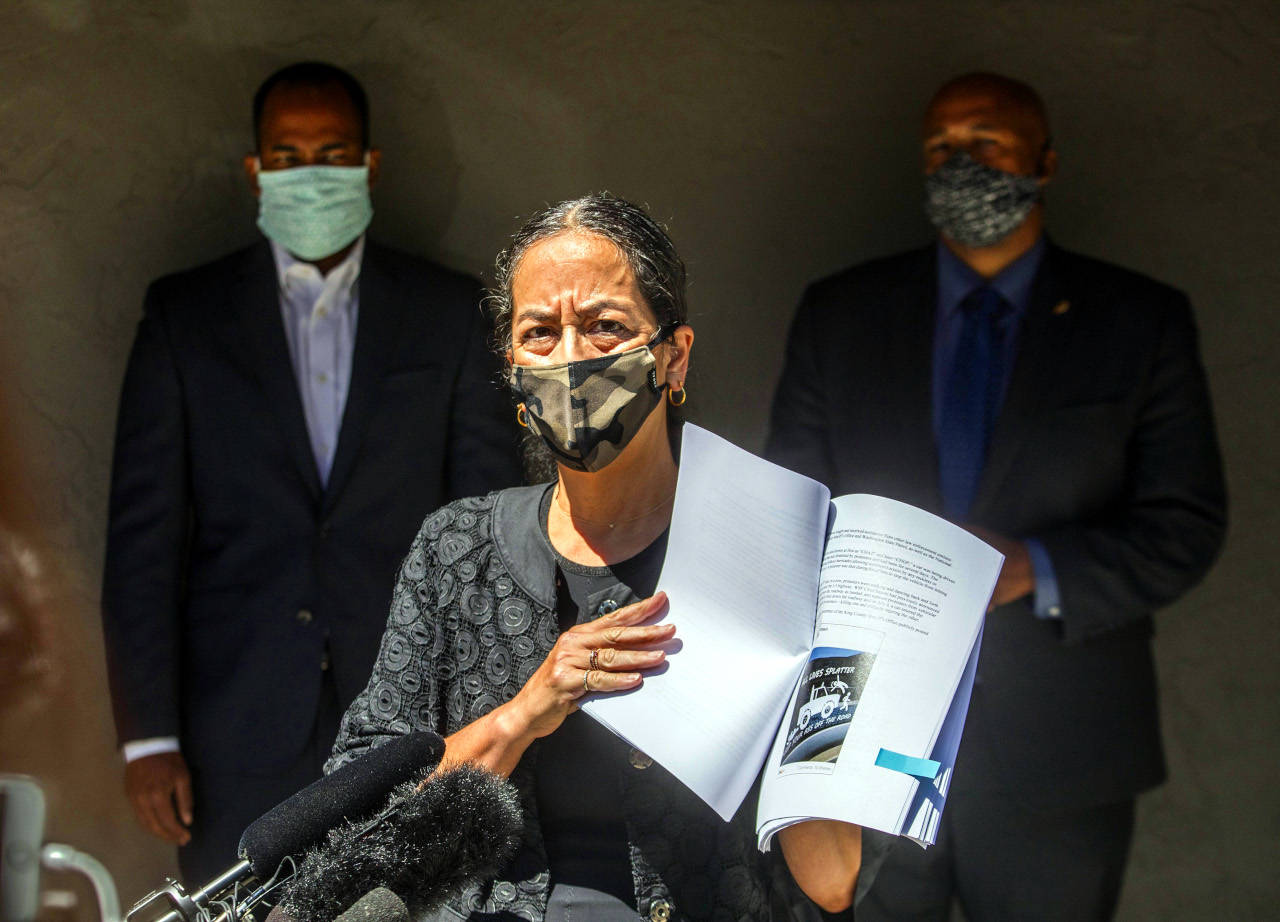By David Gutman
The Seattle Times
SEATTLE — Twelve people, or their families, who were injured or killed in Seattle protests over the past six weeks filed financial claims Monday against the city of Seattle, King County and Washington state, alleging excessive force by police or the failure of police to secure the safety of peaceful protesters.
The claims, which the city, county and state have 60 days to respond to, are the first step in filing lawsuits against the government. None of the claims ask for a specific dollar amount.
The claimants say they, or their loved ones, were hit by cars, shot, pepper sprayed, tear-gassed, put in choke holds or knocked unconscious. Seattle’s Office of Police Accountability has 28 separate investigations open regarding officers’ actions in the recent protests, several of which appear to overlap with the newly filed claims.
“There’s something wrong here, this is wrong, this is not how people who protest should be assisted,” said Karen Koehler, whose firm represents most of the claimants. “Police have escalated each and every situation.”
“Riot squad gear versus peaceful protester,” Koehler said. “Is that how you manage a peaceful protest?”
The protests, against systemic racism and police brutality, have helped propel a legislative push to cut half the funding of the Seattle Police Department and reinvest that money in social services and community programs.
The claimants, represented by the law firm Stritmatter Kessler Koehler Moore, which has a Hoquiam office, and the James Bible law firm, all, essentially, make one of two claims: Either they were met with excessive force by police or police failed to do what they said they would do to protect protesters.
The family of Summer Taylor, a demonstrator killed on Interstate 5 by a driver who evaded a police roadblock and drove through the 19th consecutive night of protests on the freeway, filed claims.
So did Daniel Gregory, who was shot in the arm at a Capitol Hill protest by a driver who appeared to be ready to drive through a crowd of protesters.
“It was a specific zone, they said they were going to protect it and they didn’t protect it,” Koehler said of the area Taylor was killed. The Capitol Hill block where Gregory was shot, Koehler continued, “Was a well-established protest zone involving a roadway. They had time to put up the barricades protecting the buildings and the officers, but not the protesters.”
Taylor’s family also filed a claim against King County, when, after Taylor’s death, a member of the King County Sheriff’s Office posted an image on Facebook with the words “all lives splatter” and wrote that “a couple of people got infected with COVID-19 from the hood of a car on I-5 last night,” according to the claim.
Ryan Abbott, a spokesperson for the sheriff’s office, said the employee who posted the image has been removed from active duty pending an investigation.
“In addition, employees who may have liked, reacted to or participated in the postings are also being investigated,” Abbott said. “We have taken this matter seriously and the Sheriff is committed to a thorough investigation.”
The other claims all involve allegations of excessive force from police. Many of them were documented by photo and video that’s been shared widely on social media.
Armand Avery filed claims on behalf of himself and his son, JoZiah, who is 7 years old, when, Avery says, they were both sprayed with Mace by Seattle police at a May 30 protest at Westlake Center.
Nikita Tarver, 36, was at the same protest when she says she was shot in the eye with a projectile, possibly a rubber bullet. She’s since had surgery on her eye, has had to wear an eye patch and it’s “an open question” whether she will regain sight in the eye, according to her claim.
Malichi Howell, 17, was also near Westlake that day when, running from tear gas, they say they were hit in the hand with a police flash grenade or tear gas canister. “Doctors determined that the explosion partially amputated Malichi’s thumb and damaged the forefinger, shattering bones,” Howell’s claim says.
Jenna Kinyon, 28, says she was hit in the stomach with a rubber bullet at the same protest. A week later, she says, she was drumming at a protest when an officer grabbed her by her neck or collar, “yanked her into the police line” and knocked her unconscious.
The next day, May 31, John William (Jack) Kelliher, 23, was walking on a sidewalk away from downtown protests, when he brushed against a Seattle police officer attempting to pass him on a bicycle. “The officer jumped on Jack and placed his arm around his neck,” and threw him to the ground, Kelliher’s claim says, before he was arrested and held in jail until early the next morning.
Jordan Pickett, 23, was reporting and taking photos for The Daily, the University of Washington’s student newspaper, when he says he was hit from behind with a “baton round,” a plastic bullet, at a June 7 protest on Capitol Hill.
Daniel Pierce, 39, was at three separate protests in the first week of June, at which he says he was tear-gassed and dispersed with flash grenades and pepper spray. “Daniel has yet to attend another protest since,” his claim says, “because of his fear caused by the police.”
Joey Weiser, 29, similarly describes police using pepper spray, tear gas, blast balls and other munitions on him and others at a string of protests in June and July.
Gillian Williams, 35, said she was diagnosed with “a bone contusion and nerve and muscle damage” after being hit with a police projectile at a June 7 protest.
Stephanie Formas, chief of staff for Seattle Mayor Jenny Durkan, said the city does not usually comment on pending claims or lawsuits. Chris Lofits, a spokesperson for the Washington State Patrol, said they do not comment on pending lawsuits.


